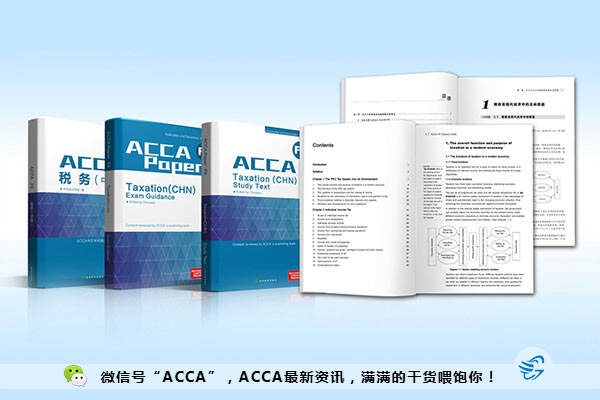Sep.
09
09
3月考试时间
3月1-5日
Dec.
12
12
6月考试时间
6月7-11日

2016年9月ACCA F6 exam tips
发表时间:2016-11-08 10:18
作者:高顿财经
2016年9月ACCA考试虽然告一段落,小编为大家整理了考试的tips,方便大家收集,以备以后考试时候可以作为一个复习的方向。
F6 TAXATION
In section A there will be a wide range of topics tested as the examiner has to set 15 OTs. We would expect at least a couple of these OTs to be devoted to the administration of income tax and corporation tax. So candidates should ensure they are comfortable with the following:
Due dates for the payment of income tax (including payments on account)Due dates for the payment of corporation tax (including instalments for large companies)Filing dates for the income tax and corporation tax returnsPenalties and interest for late payments and returnsAlso likely for the OT section of the exam are the following:
VAT rules on registration, impairment loss (bad debt) relief, and the SME schemes relating to cash accounting, annual accounting and flat-rate schemesInheritance tax due on lifetime transfers both in the donor’s life and on deathStatutory residence tests for individualsIdentification of groups of companies for corporation tax loss reliefs and gainsTrading loss reliefs for both companies and sole tradersIt is important to remember that section A offers the F6 examining team an opportunity to test THE WHOLE SYLLABUS so practising on ALL KINDS OF F6 questions from the practice and revision kit will help build and complement your existing knowledge.
In section B of the exam the questions will be similar to those of section A but there will be a longer scenario to deal with than in section A questions. This means a slightly different exam skill is necessary as you have more information to deal with and each OT will require you to find the relevant information or data in that scenario. It is not a difficult skill but we would hope you have had time to practice an extensive range of section B questions from the practice and revision kit before attempting the real exam.
In section C you will face the longer, constructed response questions with scenarios and much more open requirements. Your answers will need, not just sound technical knowledge, but also that knowledge will need to be relevant to the question you have been asked. Furthermore your answer will have to be presented logically so the marker can follow your thought processes.


At least 50% of your revision time has to be spent answering the section C questions in the practice and revision kit to build up confidence and speed in a way that will also maximise marks.
1. Remember to learn your income tax and corporation tax proformas.
2. Calculations which require no more than two or three entries into your calculator can be included on the face of your proformas (eg. Grossing up dividends/interest). Calculations which are more complex (eg. Company car benefits) need separate workings which are properly referenced (W1, W2 etc and with a heading).
3. Actually attempt the narrative parts of the requirement – aim for as many sentences as there are marks with each sentence containing something technical. Keep your paragraphs to no more than 3 sentences long (4 at an absolute maximum).
4. In both numerical and narrative answers leave plenty of space on the page. So in proformas – leave a gap between each line (you will definitely need to add something in). In narrative answers leave a line or two between each paragraph just in case you remember something later. Well spaced answers are also easier to mark – and you ALWAYS WANT TO KEEP YOUR MARKER HAPPY.
We know that the two longest questions will focus on income tax and corporation tax. This is likely to include the following.
Employment benefits
Property income
Relief for pension contributions
Adjustments to profit to arrive at trading income for both companies and sole traders – in past sitting we have seen a number of questions whereby you have to correct errors in computations included in the scenarioCapital allowance computations
It is also likely that section C will include a ten mark question on VAT, inheritance tax or capital gains tax. So remember to cover the whole syllabus in the practice and revision kit.
Finally, remember the pass mark is 50% you don’t need to be perfect. If you don’t know something have a guess and move on. Sometimes you have to do that in order to get follow through marks in section C questions. If you make a mistake but then have to use that incorrect figure later on in a subsequent calculation then that’s fine you can only lose the mark once. In section A and B never leave an OT unanswered, have a guess if need be.





